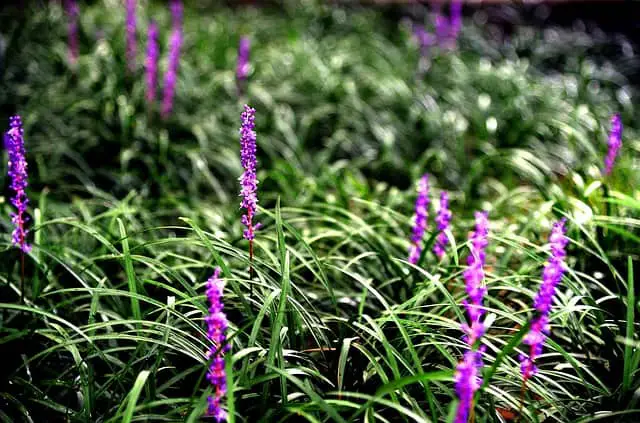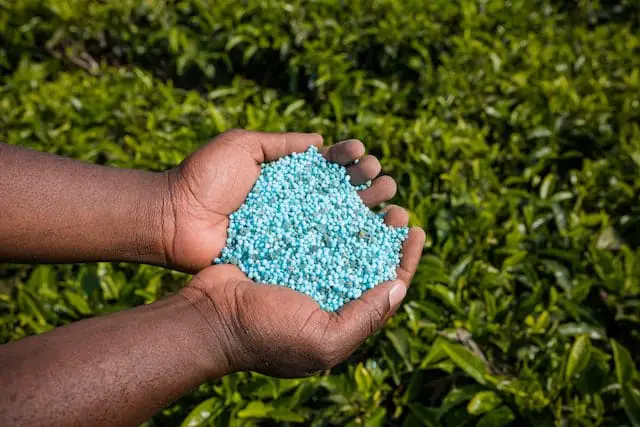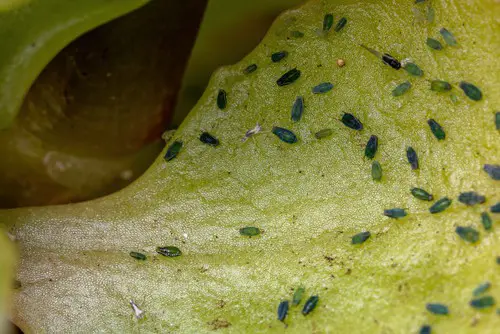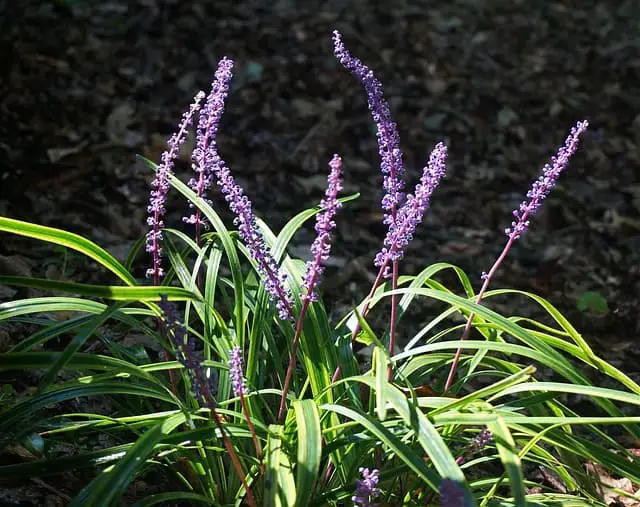Liriope is a popular plant known for its lush green foliage and purple flowers. However, if you notice your liriope turning brown, it could be a sign of a problem. Brown leaves on liriope can be caused by various factors, including diseases, pests, or environmental stress.
Understanding the cause of the problem is crucial in determining the right course of action to save your plant.
Liriope is a hardy plant that can thrive in a range of growing conditions, but it is not immune to problems. Brown leaves on liriope can be caused by a variety of factors, including fungal diseases, overwatering, poor drainage, or pests.
In some cases, the problem may be an indication of a more severe underlying issue that requires immediate attention. It is essential to identify the cause of the problem and take the necessary steps to address it promptly.
Key Takeaways
- Brown leaves on liriope can be caused by various factors, including diseases, pests, or environmental stress.
- Understanding the cause of the problem is crucial in determining the right course of action to save your plant.
- Identifying the cause of the problem and taking the necessary steps to address it promptly is essential to keep your liriope healthy.
Also don’t miss:
- Lion’s Mane Mushroom Turning Brown
- Leyland Cypress Turning Brown Inside
- Distylium Leaves Turning Brown
Understanding Liriope

Liriope, also known as lilyturf or creeping lilyturf, is a genus of ornamental grass-like perennial plants in the Asparagaceae family. Two of the most commonly grown species in the US are L.
Muscari and L. spicata, also known as monkey grass. Liriope plants are native to East and Southeast Asia and are widely cultivated as landscape plants due to their tough and drought-tolerant nature.
Liriope plants have long, narrow leaves that grow in a clump and produce spikes of small, lavender to white flowers in late summer. They are often used as ground covers, borders, or edging plants due to their low-growing and spreading nature.
Liriope plants are easy to care for and can thrive in a variety of soil types and light conditions. They prefer well-drained soil and partial to full shade, but can also tolerate some sun exposure. They are generally resistant to pests and diseases, but can be susceptible to crown and root rot if overwatered or planted in poorly-drained soil.
Ideal Growing Conditions for Liriope
Liriope is a hardy plant that can tolerate a wide range of growing conditions. However, to ensure optimal growth and prevent browning, it is important to provide the plant with the ideal growing conditions.
1. Sunlight
Liriope can grow in full sun to full shade, but it prefers partial shade. Too much sun can scorch the leaves, while too much shade can lead to poor growth and browning. It is best to provide the plant with dappled sunlight or morning sun and afternoon shade.
2. Soil
Liriope prefers moist, well-drained soil that is rich in organic matter. It can grow in a variety of soil types, including clay and sand, as long as the soil is well-drained. Wet soil and poor drainage can lead to root rot and browning.
3. Watering
Liriope requires regular watering, especially during dry spells. However, it is important not to overwater the plant, as this can lead to root rot. It is best to water deeply and infrequently, allowing the soil to dry out slightly between watering.
4. Fertilizer

Liriope does not require frequent fertilization, but it can benefit from an annual application of balanced fertilizer in early spring. Avoid over-fertilizing, as this can lead to excessive growth and browning.
5. Heat
Liriope can tolerate heat, but it prefers cooler temperatures. During hot summers, it is important to provide the plant with adequate moisture and shade to prevent browning.
By providing Liriope with the ideal growing conditions, it can thrive and remain green and healthy.
Liriope Turning Brown – 4 Common Problems
Liriope is a hardy and low-maintenance plant, but it can still experience problems that cause its leaves to turn brown or yellow. Here are some of the most common problems and their causes:
1. Overwatering
Overwatering is a common cause of brown leaves in Liriope. When the plant’s roots are constantly wet, they can’t absorb oxygen properly, leading to root rot and other fungal diseases. Symptoms of overwatering include yellowing leaves that eventually turn brown and wilt.
2. Drought
On the other hand, drought can also cause brown leaves in Liriope. When the plant doesn’t receive enough water, its leaves will start to dry out and turn brown. To prevent this, make sure to water your Liriope regularly, especially during hot and dry weather.
3. Crown Rot
Crown rot is a fungal disease that affects the base of the plant, causing reddish-brown spots on the basal leaf sections. The disease is caused by several fungi, including Phytophthora palmivora and Colletotrichum species.
Crown rot can spread quickly and cause the entire plant to wilt and die. To prevent crown rot, avoid overwatering and make sure the soil has good drainage.
4. Leaf and Crown Rot
Leaf and crown rot is another fungal disease that affects Liriope, causing dark green leaves to turn brown and wilt. The disease is caused by several fungi, including Phytophthora and Anthracnose.
Symptoms of leaf and crown rot include brown spots on the leaves and a reddish-brown discoloration at the base of the plant. To prevent leaf and crown rot, make sure to water your Liriope properly and avoid overcrowding.
Care and Maintenance of Liriope

Liriope is a popular evergreen ground cover that is easy to care for and maintain. The plant is known for its dense clumps of grass-like foliage and its beautiful lavender or white flower spikes that bloom in late summer.
To keep Liriope healthy, it is important to plant it in well-draining soil with a pH between 5.0 and 7.0. It is also important to water it regularly, especially during periods of drought. However, overwatering can lead to root rot, so it is important to strike a balance.
Liriope is a hardy plant that can tolerate a wide range of temperatures and soil conditions. It is also relatively disease and pest-resistant. However, it is important to keep an eye out for common pests like spider mites and aphids, as well as diseases like anthracnose and leaf spot.
To keep Liriope looking its best, it is important to prune it regularly to remove dead or damaged foliage. This will also help to encourage new growth. It is also important to control weeds around Liriope, as they can compete for nutrients and water.
Liriope is a versatile plant that can be used as a groundcover, edging plant, or border plant. It comes in a variety of species, each with its own unique size, flower color, and height. Some popular Liriope species include Liriope muscari and Liriope spicata.
Dealing with Diseased Liriope
Liriope is a popular landscaping plant that is known for its hardiness and ability to thrive in a variety of conditions. However, like all plants, it is susceptible to disease. Brown spots on liriope can be a sign of several different fungal diseases, including anthracnose, leaf and crown rot, and slugs and snails.
If you notice brown spots on your liriope, it is important to act quickly to prevent the spread of disease. One suggestion is to carefully remove a sample of the affected plant and take it to a local nursery or garden center for identification. This can help you determine the best course of action for treating the disease.
If the disease is identified as a fungal infection, a fungicide may be necessary to control the spread of the disease. It is important to follow the manufacturer’s instructions carefully when using fungicides, as improper use can be harmful to both the plant and the environment.
In some cases, it may be necessary to replace the affected plants entirely. This can be a difficult decision, especially if the plants are well-established and have sentimental value.
However, it is important to remember that diseased plants can spread disease to other plants in the area, so removing them may be the best course of action.
Pests Affecting Liriope

Liriope is a hardy plant that is generally resistant to pests and diseases. However, there are a few pests that can affect its health and cause it to turn brown.
1. Slugs
Slugs are a common pest that can damage liriope. They are attracted to the moist environment around the plant and can cause holes in the leaves. Slugs can be controlled by handpicking them or by using slug baits. However, it is important to use baits that are safe for liriope and follow the instructions carefully.
2. Snails
Snails are also attracted to the moist environment around liriope and can cause damage to the leaves. They can be controlled in the same way as slugs, by handpicking or using snail baits that are safe for liriope.
3. Other Pests
Other pests that can affect liriope include spider mites and aphids. Spider mites can cause yellowing and stippling on the leaves, while aphids can cause distortion and discoloration. Both pests can be controlled by using insecticidal soap or neem oil.
It is important to monitor liriope regularly for signs of pest damage and take action as soon as possible to prevent further damage. Proper care, including regular watering and fertilizing, can also help prevent pest infestations and keep liriope healthy.
Frequently Asked Questions
How do you treat anthracnose on Liriope?
Anthracnose is a fungal disease that can cause reddish-brown spots on Liriope leaves. To treat anthracnose, remove infected leaves and dispose of them properly.
Avoid overhead watering and make sure the soil is well-drained. Fungicides can also be used to control the disease, but it is important to follow the instructions on the label carefully.
What does it mean when Liriope leaves turn yellow?
Yellowing leaves on Liriope can be a sign of several issues, including overwatering, underwatering, nutrient deficiencies, or fungal diseases. It is important to identify the underlying cause before taking action.
If the issue is overwatering, reduce watering frequency and improve drainage. If it is a nutrient deficiency, fertilize the plant appropriately. If it is a fungal disease, follow the appropriate treatment plan.
How do you treat Liriope fungus?
Fungal diseases on Liriope can be treated with fungicides. It is important to choose a fungicide that is labeled for use on Liriope and to follow the instructions on the label carefully.
In addition to using fungicides, it is important to improve air circulation around the plant and avoid overhead watering.
How do you treat Liriope root rot?
Liriope root rot is caused by soil-borne fungi and can be difficult to treat. To prevent root rot, make sure the soil is well-drained and avoid overwatering.
If root rot is already present, remove infected plants and dispose of them properly. Fungicides can also be used to control the disease, but it is important to follow the instructions on the label carefully.
Can you overwater Liriope?
Yes, overwatering Liriope can lead to root rot and other fungal diseases. It is important to make sure the soil is well-drained and to avoid watering too frequently. Liriope plants generally prefer slightly moist soil, but they can tolerate some drought.
What are some common diseases of Liriope?
Some common diseases of Liriope include anthracnose, leaf and crown rot, and root rot. These diseases are caused by fungal pathogens and can be controlled with fungicides and proper cultural practices.
It is important to identify the underlying cause of any disease before taking action to treat it.

Hey, I’m Lisa and I’ve been an avid gardener for over 30 years. I love writing, talking and living in the garden! Feel free to connect with me on my socials below


